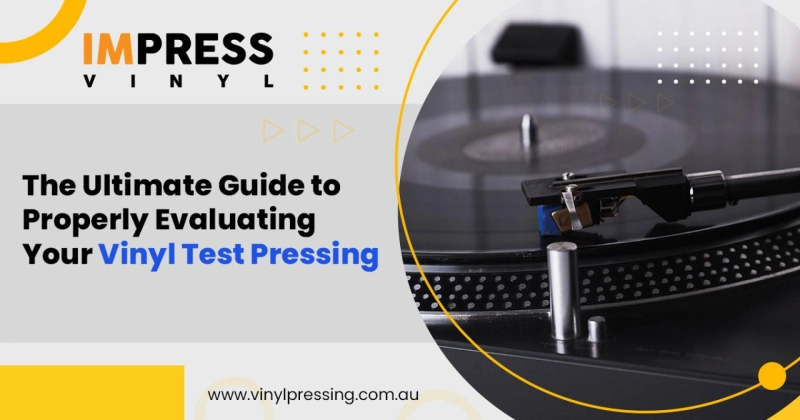Vinyl records have made a remarkable resurgence in recent years, attracting audiophiles and music lovers alike. As a vinyl enthusiast, obtaining a test pressing of your favorite album can be an exciting moment. However, to truly appreciate the unique sound and quality of your vinyl test pressing, it's crucial to evaluate it properly. In this article, we will provide you with valuable tips and insights to help you assess your vinyl test pressing and unlock its true potential.
Visual Inspection (150 words) Begin your evaluation by visually inspecting the vinyl test pressing. Look for any visible defects, scratches, or warping. Pay close attention to the surface of the record and examine it under adequate lighting. Check for any imperfections or abnormalities that could potentially affect the playback quality. Remember that a thorough visual inspection is the first step towards identifying any potential issues that may impact your listening experience.
Sound Quality Assessment (200 words) After ensuring the physical condition of your test pressing, it's time to evaluate its sound quality. Start by cleaning the record using a carbon fiber brush or a record cleaning machine to remove any dust or debris. Then, play the vinyl on a high-quality turntable with a calibrated stylus. Listen attentively to the overall sound, paying attention to clarity, dynamics, and tonal balance. Take note of any distortions, background noise, or pops that may hinder the listening experience.
Frequency Response and Balance (150 words) To further assess the sound quality of your vinyl test pressing, focus on the frequency response and balance. Listen to different tracks and genres that cover a wide range of frequencies. Pay attention to the bass response, midrange clarity, and treble extension. A well-balanced vinyl record should reproduce all frequencies accurately without any significant variations or distortions. Analyzing the frequency response will help you identify any irregularities in the mastering or pressing process.
Tracking and Skipping Issues (150 words) One common concern with vinyl records is tracking and skipping problems. During your evaluation, pay attention to any tracking issues that may occur, particularly during complex or bass-heavy passages. If the stylus tends to skip or skate across the record, it may indicate a pressing defect or inadequate tracking force. Make sure your turntable setup is properly calibrated and adjusted according to the manufacturer's recommendations.
Overall Pressing Quality (200 words) Assessing the overall pressing quality is essential for evaluating your vinyl test pressing. Examine the center hole and ensure it is centered accurately. Inspect the thickness and weight of the record, as these factors can influence stability and durability. Check the vinyl's flatness and ensure it sits evenly on the turntable platter. Additionally, evaluate the quality of the packaging, including the sleeve and inserts, as they contribute to the overall value and preservation of your vinyl collection.
Conclusion (100 words) Evaluating your vinyl test pressing is a crucial step in appreciating the unique qualities of vinyl records. By following these tips, you can identify any potential issues, maximize sound quality, and ensure an exceptional listening experience. Remember to maintain a clean and well-maintained turntable setup to enhance the longevity and performance of your vinyl collection. Take the time to explore different genres and albums, allowing your vinyl test pressings to transport you to a world of musical bliss. Happy listening!
Source: Evaluate Vinyl Test Pressing


